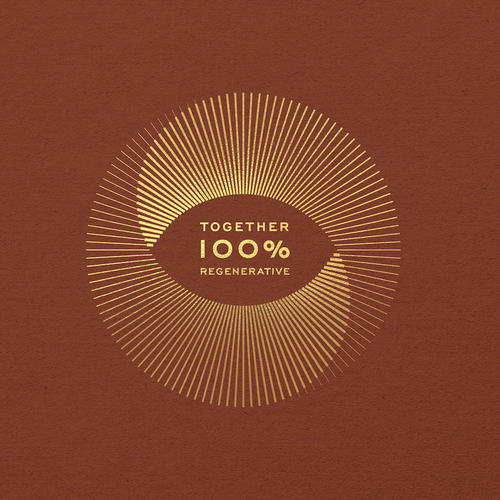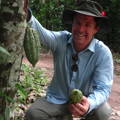
Frequently Asked
Questions
Questions


General
Questions
Payment &
Shipping
Chocolate &
Ingredients
FAIRNESS AND
SUSTAINABILITY
Where can I buy Original Beans?
Depending on your country you can find us in the chocolate shelfs of key organic supermarkets, bigger finefoodstores, chocolate shops and on our website. Please do not hesitate to contact us on info@originalbeans.com if you want to find out exactly where to get your next bar of delicious Original Beans chocolate.
What are the terms & conditions for the Original Beans webshop?
You can find all relevant information on the following links:
Delivery
Return policy
General Terms & Conditions
Delivery
Return policy
General Terms & Conditions
Do I have to create an account?
A customer account is not only necessary to place an order but it also offers considerable benefits. With an account, you will be able to check the status of your current orders, manage your delivery address or payment method as well as your personal data and account settings. Moreover, you can create a wishlist of your favorite products.
Is my payment information secure, so that it is not visible to third parties when transmitted?
We pledge to never sell your information to marketers. Nor will we send you spam e-mails. For detailed information, please review our Privacy Policy.
How can I pay?
You can buy with the following payment tools:
Credit card, Paypal, Bank Transfer and ApplePay
As soon as the bank transfer has reached our account, we can continue carrying out your order. Please note that due to various factors, it might take up to 4-5 work days before we receive your payment.
How long does a transfer take?
Due to the transfer periods between banks, it may take a few days for your payment to reach us. Transfers might take up to 4-5 days. As soon as we receive your payment in our account, the order status will change in your customer account.
Please note that we can only send parcels, once we have received your transfer payment. This rule also applies to express deliveries.
Please note that we can only send parcels, once we have received your transfer payment. This rule also applies to express deliveries.
I placed an order, but I still have not received a confirmation e-mail. What should I do?
Please check that you have entered the correct e-mail address. The order confirmation is always sent to the e-mail address saved in your customer account. If this email address is correct, please check your spam folder just in case.
If you then still cannot find the confirmation e-mail, please contact our customer service at service@originalbeans.com.
If you then still cannot find the confirmation e-mail, please contact our customer service at service@originalbeans.com.
Where do you deliver to?
We ship our delicious chocolates to all countries in Europe and the UK. For special inquiries please contact us via service@originalbeans.com
How much does delivery cost?
All parcels within Germany are dispatched by DHL; parcels with a delivery address abroad are sent via UPS. Delivery costs vary depending on the country where your delivery address is located. A full overview of all costs is available here.
How long will my delivery take?
We process all orders as quickly as possible. However, the delivery time depends on several factors: your selected payment method, the availability of the products and the type of delivery.
As a general rule: Delivery period = parcel transit time + order preparation time
Parcel transit time:
The transit time for your delivery is the time period required by the courier service to send your delivery. This varies depending on the courier service and the country the parcel is being delivered to. For more information about parcel transit times, please refer to the delivery information for your country or read through the detailed information about possible delivery methods available during the ordering process.
Order preparation time:
Please also take note of the delivery information on the product detail pages: e.g. "Ready for shipment: 2-3 working days" does not mean that the parcel will be delivered within the next 2-3 days. It means that 2-3 working days are necessary to prepare your order for shipment.
What happens, if I am not at home when the delivery arrives?
You will receive a notification with the estimated arrival time of your delivery, so you can plan accordingly. Usually, the courir hands the parcel over to a neighbour or a near-by post office/ delivery station from where you can pick it up.
What if my chocolate has not arrived?
Please contact us under service@originalbeans.com or create a ticket via “My Account”. We will investigate the issue and make sure you receive your chocolate as soon as possible.
Why is the chocolate called “Original Beans”?
With our name, we refer to the origin cacao varieties that we search and protect. The regions where Original Beans sources from offer unique cacaos, with extraordinary flavours reflecting their distinct terroirs. We have rediscovered and replanted long-forgotten beans, like the ultra-rare Piura Porcelana in Peru and the wild Beniano cacao, that grows endemically in the Bolivian Amazonas.
Where does the cacao for Original Beans chocolates come from?
The cacao comes from highly biodiverse regions in South America and Africa. At the ground, we cooperate closely and trade directly with the cacao farmers. The organic cacao for all our chocolates grows either wild in the rainforest or semi-wild as mixed crops but never in plantations. To highlight the special taste of the fine flavour cacao, we only produce single origin chocolates. Read here more about our cacao origins
What is cacao butter?
Cacao butter is the fat extracted from the cacao beans. The cacao butter used in all Original Beans chocolates stems from organic Trinitario beans from CONACADO, an organization of smallholder cacao farmers from the Dominican Republic.
Usually cacao butter is filtered and deodorized to get a neutral, standardized product. CONACADO’s cacao butter is different: It is warmly roasted and then pressed unfiltered. Thus, it fits perfectly to Original Beans’ philosophy of preserving distinct aromas.
Usually cacao butter is filtered and deodorized to get a neutral, standardized product. CONACADO’s cacao butter is different: It is warmly roasted and then pressed unfiltered. Thus, it fits perfectly to Original Beans’ philosophy of preserving distinct aromas.
Besides cacao beans, what else do the chocolates contain?
Besides our finest single origin cacao beans, we just add raw cane sugar, in some bars cacao butter and milk (in our milk chocolates). The ingredients are all carefully selected to meet organic and sustainability standards.
Read here more details about our ingredients.
Read here more details about our ingredients.
What kind of milk do you use?
Original Beans milk couvertures using rich Swiss milk. The natural biodiversity of our region with its lush meadows and alps boasting over 100 different flowers and herbs, where cows gently graze, and the crystal clear mountain spring water contribute to the unique quality of Swiss milk.
The cows are kept in a particularly species-appropriate manner and spend a lot of time in the open air. Because only animals that feel comfortable give healthy, tasty milk. We stand for biodiversity. In generous ecological areas like hedges, heaps of branches, flower meadows or in high-stem orchards rare plants and animals find new habitats.
Last but not least, society benefits from sustainable milk: Because cows mainly eat grass, the world’s population has more grain than food.
The cows are kept in a particularly species-appropriate manner and spend a lot of time in the open air. Because only animals that feel comfortable give healthy, tasty milk. We stand for biodiversity. In generous ecological areas like hedges, heaps of branches, flower meadows or in high-stem orchards rare plants and animals find new habitats.
Last but not least, society benefits from sustainable milk: Because cows mainly eat grass, the world’s population has more grain than food.
What is raw cane sugar?
Raw cane sugar is not carbonated or decolorized, meaning that besides sucrose and small amounts of fructose and glucose, it contains all the important minerals of sugar cane. The negative impact on the world’s climate is 40% less than products made with beet sugar, which is usually used in sweets.
Are there any additives in Original Beans chocolates?
As we want to bring out the natural aroma of unique cacao bean varieties, Original Beans chocolates are free from additives such as emulsifiers (like lecithin), foreign fats (like palm oil), industrial sugar or aromas (like vanillin). Besides the fact that additives like soy lecithin and palm oil gloss over the beans´natural taste, they are also against our philosophy of conserving the rainforest - because they are often the cause for deforestation in the first place.
How do you obtain the glaze, aroma and texture without additives?
We do not require emulsifiers like lecithin for the processing of our chocolates - due to the high-quality ingredients we use, our well elaborated recipes as well as proper roasting and conching times.
What does conching mean?
Conching is a modern process used in making chocolate. It takes place in steel vessels that stir the mass over several hours so that remaining water gets extracted and the cacao butter evenly distributed in the chocolate. The characteristic taste, smell and texture are developed during the conching. The word goes back to the Spanish word “concha”, which means shell. It arose because the original vessel that used to hold the chocolate was shaped like a conch shell.
Our conching times differ between 15 and 25 hours - depending on what is necessary to best bring out the beans´ aroma profile.
How to best store the chocolate?
Since we refrain from using stabilizers and preservative agents, our chocolates are more temperature sensitive than other chocolate products. Original Beans chocolates should ideally be stored in a cool and dry place with a temperature between 16°C and 18° Celsius. Please do not store the chocolates in the refrigerator because the sugar content will crystallize due to the humidity. Too hot of a storage place is also not ideal as the cacao butter will be released and deposited as a white layer on the surface. Due to the loss of the cacao butter, the chocolate will dry up and lose its aroma.
Where does the white layer on my chocolate come from?
Such white coating on the surface does NOT carry any health risk but may affect the taste.
There are two possible reasons for a white layer on chocolate: fat bloom or sugar bloom. Fat bloom occurs when the cacao butter separates from the other components. This happens when the chocolate melts and solidifies again. Sugar bloom is much rarer. It occurs when the sugar separates from the other components. This happens when the chocolate gets wet, for example when you carry it openly home in heavy rain.
Usually, the bloom arises due to wrong storage in the shop. Therefore, we advise you to contact your retailer and to return the chocolate there.
Usually, the bloom arises due to wrong storage in the shop. Therefore, we advise you to contact your retailer and to return the chocolate there.
Which Original Beans chocolate is suitable for vegans?
All of our dark chocolates are vegan, also our Esmeraldas 50% Vegan M!lk. Only our milk chocolates - Esmeraldas Milk 42%, Femmes de Virunga 55% and Yuna 37% (Edelweiss) - contain milk products.
What does the percent value on the packaging indicate?
It generally indicates the percentage of cacao beans in our chocolates. In the case of the white chocolate Yuna 37%, it indicates the percentage of cacao butter derived from the beans.
What is the difference between the bars and the chef chocolate buttons?
The chocolate used for both is the same. The bars can therefore also be used as couvertures. However, because of their handy form, the chocolate buttons are ideal for cooking, baking and making hot chocolate.
What do allergy sufferers have to consider?
Despite intensively cleaning after every production with possible allergen ingredients, all our chocolate may contain minimal traces of hazelnuts and almonds. And for the dark chocolate also minimal traces of milk.
Moreover, our milk chocolates - Esmeraldas Milk, Femmes de Virunga and Edel Weiss - contain animal proteins in form of milk powder.
Moreover, our milk chocolates - Esmeraldas Milk, Femmes de Virunga and Edel Weiss - contain animal proteins in form of milk powder.
What is cadmium?
Cadmium is a natural metal element like lead, zinc and copper. In combination with other substances it is present in the earth’s crust and in the air, water and soil.
Cadmium can be unhealthy depending on the form of cadmium, the amount of intake in the body and whether the cadmium is eaten or inhaled. High levels of cadmium can cause flu-like symptoms and are also related to bone and lung diseases.
If you eat grains, potatoes, some leafy vegetables, shellfish and chocolate, you will already have ingested naturally occurring cadmium. Depending on the region where your foods come from, the amount of cadmium traces vary considerably.
Why is Cadmium relevant for chocolate consumers?
In chocolate, higher levels of cadmium traces are found in cacao beans from South America compared to cacao beans originating from Africa and Asia. Cacao trees absorb cadmium during their metabolic processes which is then stored in the cacao fruit and its seeds, the beans. No process exists to remove cadmium traces during the chocolate making and so they make their way into the final chocolate product.
EU Regulation on Cadmium Limits effective as of January 1st 2019
New regulations regarding maximum allowable limits of cadmium, as specified in the European Regulation (EC) No 1881/2006 of 19 December 2006, will become effective as per the 1st January, 2019.
Original Beans has been monitoring cadmium levels in the beans and the chocolates for years through analysis of independent and recognised external laboratories.
All Original Beans products will of course comply to EU regulations. We will continue to measure cadmium levels in all our cacao beans and all chocolates. And we will report them to you on demand. In this way, we want to make sure you can enjoy a pure, natural product from local provenance without a second thought.
What are the EU’s Cadmium Limits?
Cadmium can be unhealthy depending on the form of cadmium, the amount of intake in the body and whether the cadmium is eaten or inhaled. High levels of cadmium can cause flu-like symptoms and are also related to bone and lung diseases.
If you eat grains, potatoes, some leafy vegetables, shellfish and chocolate, you will already have ingested naturally occurring cadmium. Depending on the region where your foods come from, the amount of cadmium traces vary considerably.
Why is Cadmium relevant for chocolate consumers?
In chocolate, higher levels of cadmium traces are found in cacao beans from South America compared to cacao beans originating from Africa and Asia. Cacao trees absorb cadmium during their metabolic processes which is then stored in the cacao fruit and its seeds, the beans. No process exists to remove cadmium traces during the chocolate making and so they make their way into the final chocolate product.
EU Regulation on Cadmium Limits effective as of January 1st 2019
New regulations regarding maximum allowable limits of cadmium, as specified in the European Regulation (EC) No 1881/2006 of 19 December 2006, will become effective as per the 1st January, 2019.
Original Beans has been monitoring cadmium levels in the beans and the chocolates for years through analysis of independent and recognised external laboratories.
All Original Beans products will of course comply to EU regulations. We will continue to measure cadmium levels in all our cacao beans and all chocolates. And we will report them to you on demand. In this way, we want to make sure you can enjoy a pure, natural product from local provenance without a second thought.
What are the EU’s Cadmium Limits?
As of January 1st 2019, the European Commission is introducing the following legal maximum levels of cadmium permitted for cacao, chocolate and their derivatives (Regulation EC 1881/2006 of 19 December 2006):

Are Original Beans chocolates Fairtrade?
Our chocolates do not carry the Fairtrade logo because it does not fit 100 percent with our philosophy and quality standards. As a trendsetting and responsible company, Original Beans does not want to outsource important controlling tasks - with respect to fair trade, farmer trainings and reforestation - to third parties. Original Beans’ cacao is produced in long-term partnerships with indigenous communities and small farmer cooperatives.
With our cacao conservation leaders “on the ground”, we can guarantee full traceability and the implementation of our conservation principles. Original Beans is a member of the Direct Cacao Organization, which brings together bean-to-bar chocolate makers who buy quality fine cacao directly from farmers and pay much more for their cacao than the Fairtrade standard.
Original Beans’ Value Chains
To increase the value-add at farmer level, we source directly, at premium prices, ensuring a living income while supporting farmers in cacao growing matters like quality improvements, yield increase, and income diversification. For us, direct trade means sourcing directly at farmer or village level through a local partner. Next to long-term partnerships, the Original Beans field team has a direct connection to the farmer communities by working on the ground.
To increase the value-add at farmer level, we source directly, at premium prices, ensuring a living income while supporting farmers in cacao growing matters like quality improvements, yield increase, and income diversification. For us, direct trade means sourcing directly at farmer or village level through a local partner. Next to long-term partnerships, the Original Beans field team has a direct connection to the farmer communities by working on the ground.
Is child labour involved in Original Beans’ cacao harvesting?
Child labour is any work that deprives children of their childhood, their potential and their dignity, and that is harmful to their physical and/or mental development. It refers to work that is mentally, or morally dangerous and harmful to children; and/or interferes with their schooling (ILO).
High school attendance within our sourcing regions, child labour education and awareness training, and well-organised farmer and community structures point at low risk of child labour instances. Local partners signed our ‘No Child Labour’ Statement and regular educational trainings increase awareness amongst families and emphasise the importance of ceasing any type of child labour.
Living Income
Living income is the net annual income that a household needs in a particular place to afford a decent standard of living. A household should be able to afford food, water, housing, education, healthcare, transport, clothing, and other essential needs (LICoP).
High school attendance within our sourcing regions, child labour education and awareness training, and well-organised farmer and community structures point at low risk of child labour instances. Local partners signed our ‘No Child Labour’ Statement and regular educational trainings increase awareness amongst families and emphasise the importance of ceasing any type of child labour.
Living Income
Living income is the net annual income that a household needs in a particular place to afford a decent standard of living. A household should be able to afford food, water, housing, education, healthcare, transport, clothing, and other essential needs (LICoP).

What are Original Beans’ conservation efforts?
For every bar sold, Original Beans enables the farmers in the origins to plant a new tree. That can be both a cacao or shade tree. For their cultivation, we set up tree nurseries where the seedlings grow until they can be planted. The farmers with whom Original Beans cooperates are trained as “tree experts” and gain knowledge about the fragile ecology they live in during their work in the nurseries. Once big enough, the new trees are planted in the midst of the rainforest and provide both food and a source of income for the farmers – all without chopping down precious forest.
Original Beans are sourced on purpose from origins defined by the scientists as biodiversity hotspots and wilderness areas. These are the most biologically diverse places on earth, but also the most threatened. Our local reforestation projects seek to re-establish the balance of these unique ecosystems and to protect nature’s wonderful wildlife. To achieve full traceability, the consumer can track the tree on our website.
Original Beans are sourced on purpose from origins defined by the scientists as biodiversity hotspots and wilderness areas. These are the most biologically diverse places on earth, but also the most threatened. Our local reforestation projects seek to re-establish the balance of these unique ecosystems and to protect nature’s wonderful wildlife. To achieve full traceability, the consumer can track the tree on our website.
What is the packaging made of?
According to our zero waste policy, the foil as well as the cardboard are made from FSC-certified wood cellulose and thus 100 percent recyclable. Try it on your garden compost!
What does climate-positive mean?
Original Beans strives to turn its balance of greenhouse gas emissions and water consumption from a debit to nature into a positive contribution.
Cacao forests, if regeneratively farmed, absorb enough CO2 in trees and soils, that all the emissions from making chocolate are more than compensated. They can even become climate-positive, if the warehouse uses solar energy (as ours does), and the packaging comes from Europe’s climate-leading paper mill (like ours). For climate, our One Bar : One Tree programme is a cherry on top.
Read more about our CO2-positive chocolates
Cacao forests, if regeneratively farmed, absorb enough CO2 in trees and soils, that all the emissions from making chocolate are more than compensated. They can even become climate-positive, if the warehouse uses solar energy (as ours does), and the packaging comes from Europe’s climate-leading paper mill (like ours). For climate, our One Bar : One Tree programme is a cherry on top.
The team, too, takes an earth-first approach. They travel by train and bus and power their IT with green energy. At year’s end, we purchase certificates from a Climate Forest.
How does the one4one trees programme work?
For every chocolate bar we sell, we pay the farmers an extra amount on top of what we pay for their cacao. We then make sure that this extra money is used for planting trees, both cacao and neighboring shade trees.
When you break off a piece of Original Beans chocolate, you are breaking ground for a new tree. Each tree is a miracle, an ecosystem in itself with the potential to become one of the oldest and largest beings in the world! But trees are not meant to be solitary creatures. They thrive with others in a forest, just like the trees we are planting and preserving. And these forests, called agrofields by the farmers, have a great impact in different ways:
They MULTIPLY FARMERS’ INCOME
They PROTECT THE RARE because each tree propagates the unique genes of rare cacao varieties
They guarantee that the production of Original Beans chocolate is CLIMATE-POSITIVE. As each tree absorbs CO2 from the atmosphere to grow, the tree planted or preserved per bar offsets the emissions for the entire production of the bar. In simple terms, you are reducing carbon emissions with every delicious bar you consume.
They REBUILD & PRESERVE THE HABITAT of endangered animals, and other wildlife and plants
All of this would not be possible without you, our conscious customers. Thank you for helping us to replenish the rare!
When you break off a piece of Original Beans chocolate, you are breaking ground for a new tree. Each tree is a miracle, an ecosystem in itself with the potential to become one of the oldest and largest beings in the world! But trees are not meant to be solitary creatures. They thrive with others in a forest, just like the trees we are planting and preserving. And these forests, called agrofields by the farmers, have a great impact in different ways:
They MULTIPLY FARMERS’ INCOME
They PROTECT THE RARE because each tree propagates the unique genes of rare cacao varieties
They guarantee that the production of Original Beans chocolate is CLIMATE-POSITIVE. As each tree absorbs CO2 from the atmosphere to grow, the tree planted or preserved per bar offsets the emissions for the entire production of the bar. In simple terms, you are reducing carbon emissions with every delicious bar you consume.
They REBUILD & PRESERVE THE HABITAT of endangered animals, and other wildlife and plants
All of this would not be possible without you, our conscious customers. Thank you for helping us to replenish the rare!
Are Original Beans chocolates organic?
The Original Beans chocolates are certified with the EU organic logo. It means that our chocolates are produced in full conformity with the conditions and regulations for the organic farming sector established by the European Union.
Only our Beni Wild Harvest does not carry the logo because it contains wild cacao which does not comply with all organic certification criteria. Instead, the Beniano beans are certified “FairWild”.
Only our Beni Wild Harvest does not carry the logo because it contains wild cacao which does not comply with all organic certification criteria. Instead, the Beniano beans are certified “FairWild”.
What does wild cacao mean?
The Beniano used for Original Beans Beni Wild Harvest is an endemic wild cacao that grows on cacao forest islands in the Bolivian Amazon, where it is hand picked by indigenous collectors.
How do the other cacao varieties grow?
Unlike common hybrid cacaos, none of our original cacao varieties grows on plantations. Except for the wild Beniano, they all are cultivated as mixed crops in semi-wild cacao gardens directly in the rainforest. This sustainable way of cultivation is possible because cacao naturally flourishes in the shadow of other trees. Furthermore, a diverse flora also enriches the forest terroir; its aroma is reflected in the cacao beans.
What kind of trees does Original Beans plant?
With our one4one trees program, we plant cacao and neighboring shade trees, such as fruit trees or legumes, as mixed crops in cacao forests. We also reforest native forest stands in the cacao origins to replenish the green lung of our planet. In the latter case, it’s not about the cacao itself but about nature conservation of its rainforest home.
Is Original Beans a bean-to-bar chocolate?
To distinguish artisanal from large-scale industrial production coffee, beer, gin and now chocolate makers are using new words to describe their uniqueness. “Bean-to-bar” is such a word and it tries to capture the notion that bean-to-bar makers are deeply involved and control every step of chocolate making from the cacao bean to the chocolate bar. In this sense, Original Beans is a bean-to-bar maker.
However, we prefer the work “craft” as in craft beer, craft gin, craft baker, etc. for the description of what we do. With peer chocolate makers we collaborate closely to define and spread the words, including craft, heirloom, direct trade, etc.
contact form
Still have questions?
Send us your question by filling out the form below, we will be happy to assist you.



